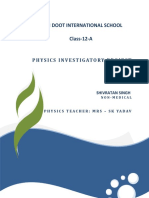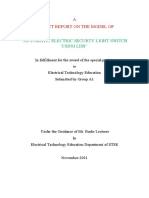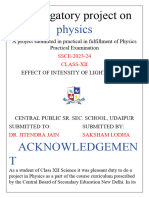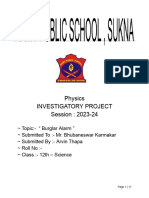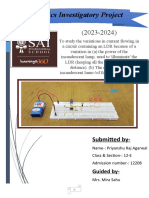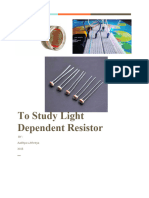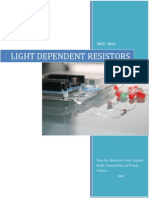0% found this document useful (0 votes)
34 views17 pagesFake
This document is a project report for an automatic light detection switch circuit using an LDR (Light Dependent Resistor). It includes a title page with the student and school details, a certificate page signed by the teacher, an acknowledgements page thanking those who helped with the project, and sections on the topic, aim, introduction, theory, apparatus, procedure, observations, applications, conclusion, precautions, and bibliography. The project demonstrates how an LDR can be used to automatically switch a circuit based on the presence or absence of light, with potential applications such as automatic street lights, intruder alarms, and traffic counters.
Uploaded by
yogya1109sharmaCopyright
© © All Rights Reserved
We take content rights seriously. If you suspect this is your content, claim it here.
Available Formats
Download as PDF, TXT or read online on Scribd
0% found this document useful (0 votes)
34 views17 pagesFake
This document is a project report for an automatic light detection switch circuit using an LDR (Light Dependent Resistor). It includes a title page with the student and school details, a certificate page signed by the teacher, an acknowledgements page thanking those who helped with the project, and sections on the topic, aim, introduction, theory, apparatus, procedure, observations, applications, conclusion, precautions, and bibliography. The project demonstrates how an LDR can be used to automatically switch a circuit based on the presence or absence of light, with potential applications such as automatic street lights, intruder alarms, and traffic counters.
Uploaded by
yogya1109sharmaCopyright
© © All Rights Reserved
We take content rights seriously. If you suspect this is your content, claim it here.
Available Formats
Download as PDF, TXT or read online on Scribd
/ 17






